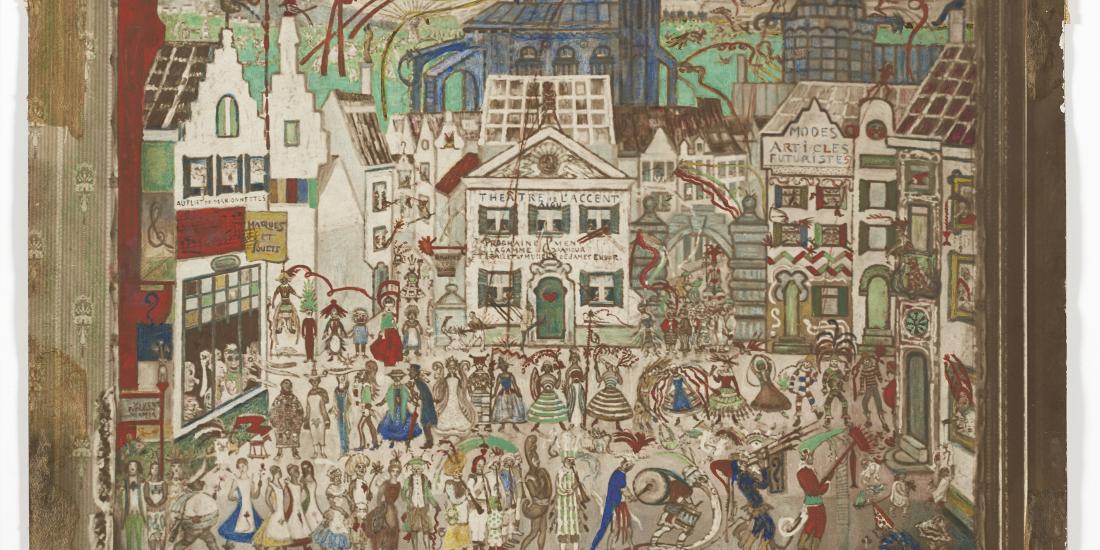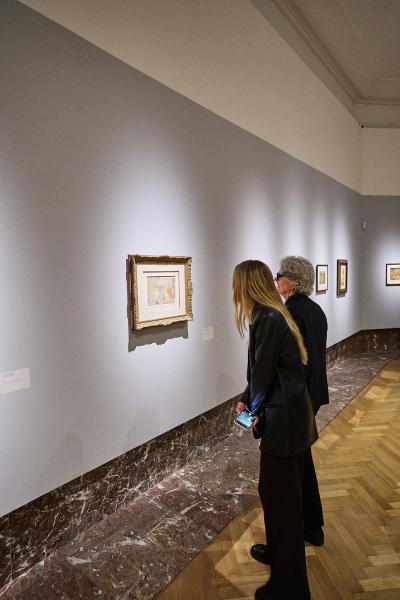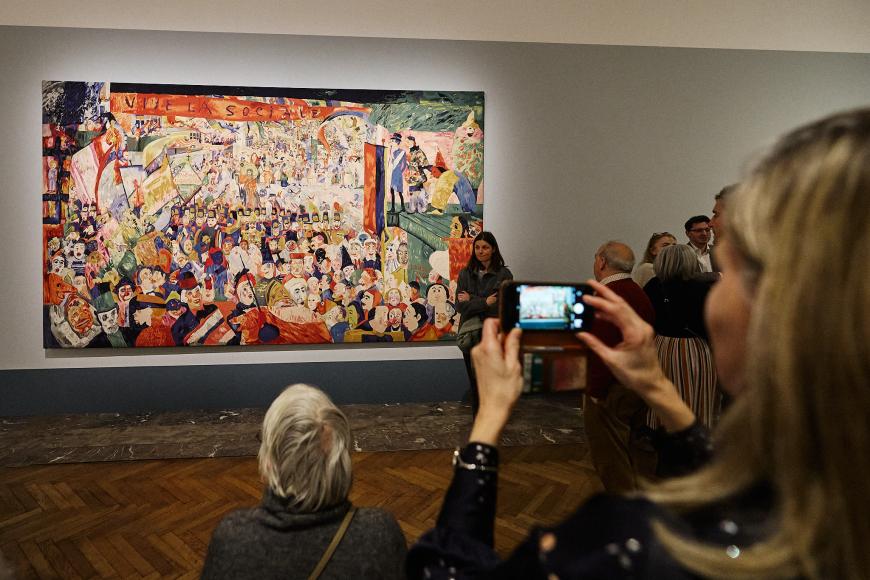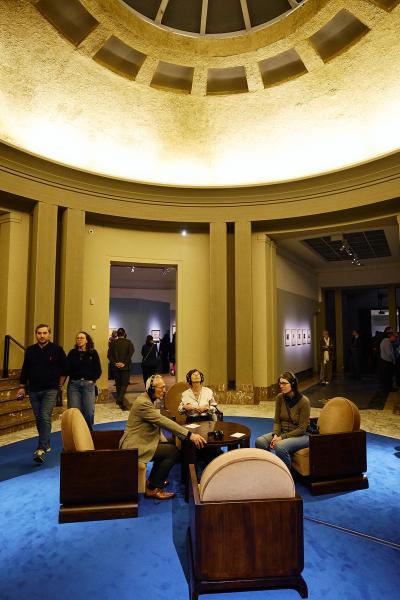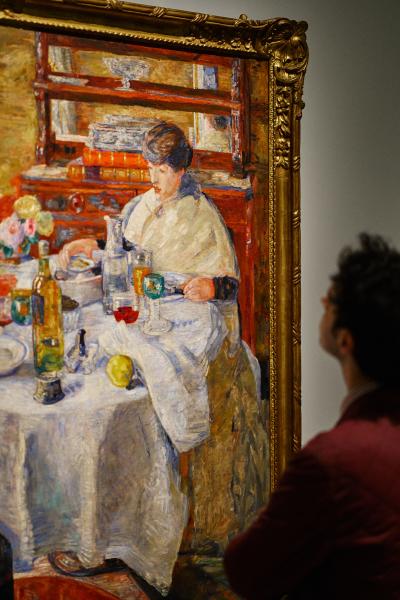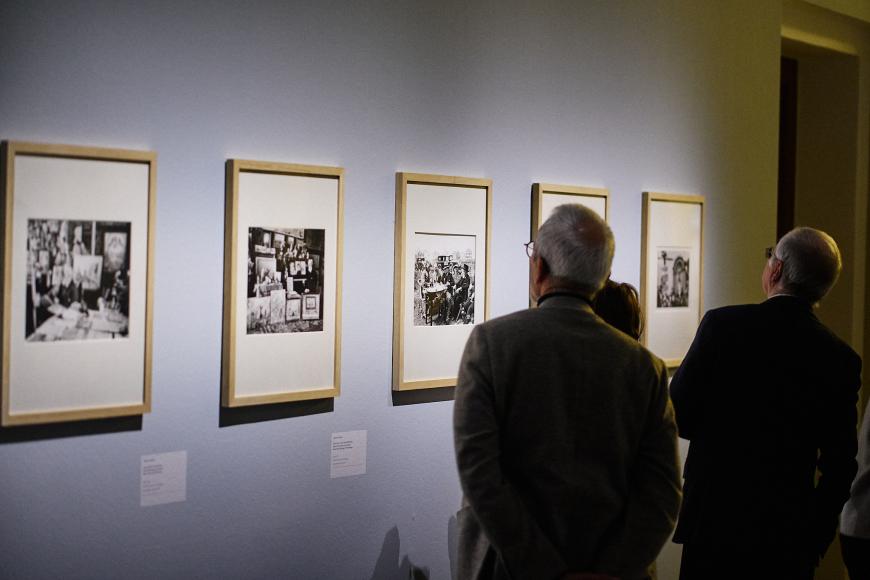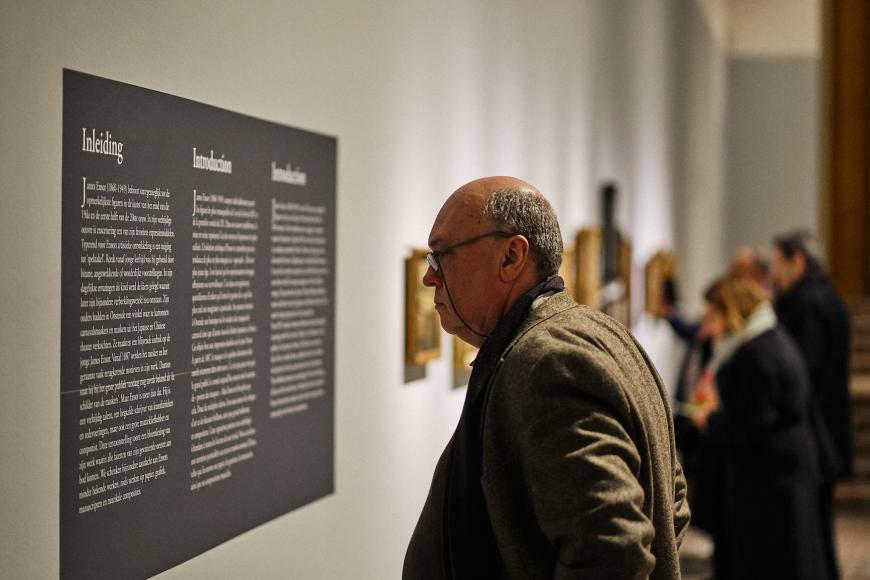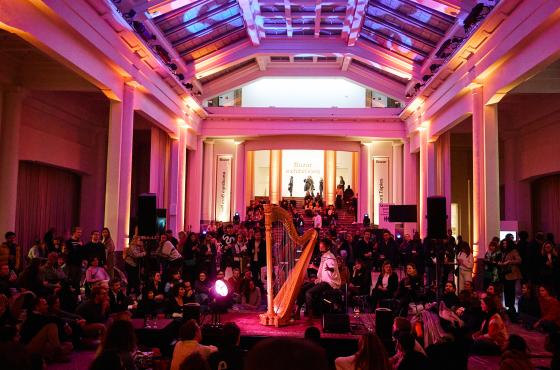A musician with his head in the clouds
Ensor's guests described how the Ostend artist could entertain them by playfully playing a whistle through one of his nostrils! In turn, his impressive improvisations on piano touched a very sensitive chord. He plays unorthodoxly, with extended fingers, mainly on the black keys of the keyboard. Significantly, many children's songs consist only of these notes, and Chinese and Indian music are also built on them. Do we catch Ensor on exotic nostalgia?
In 1906, art collectors Albin and Emma Lambotte donated a harmonium to the artist. This "musical home trainer" becomes Ensor's favourite instrument. A harmonium resembles a buffet piano, but the sound is produced by air pushed via pedals. A second difference from the piano is that the timbre can be adjusted via stops, just like an organ (shown above Ensor's hand in the photo below). This allowed Ensor to lose himself in different sound worlds. The instrument appears sporadically in compositions by Liszt, Mahler and Schoenberg. Ensor - although an amateur musician - looks up to them and writes several pieces of music from 1905 onwards.
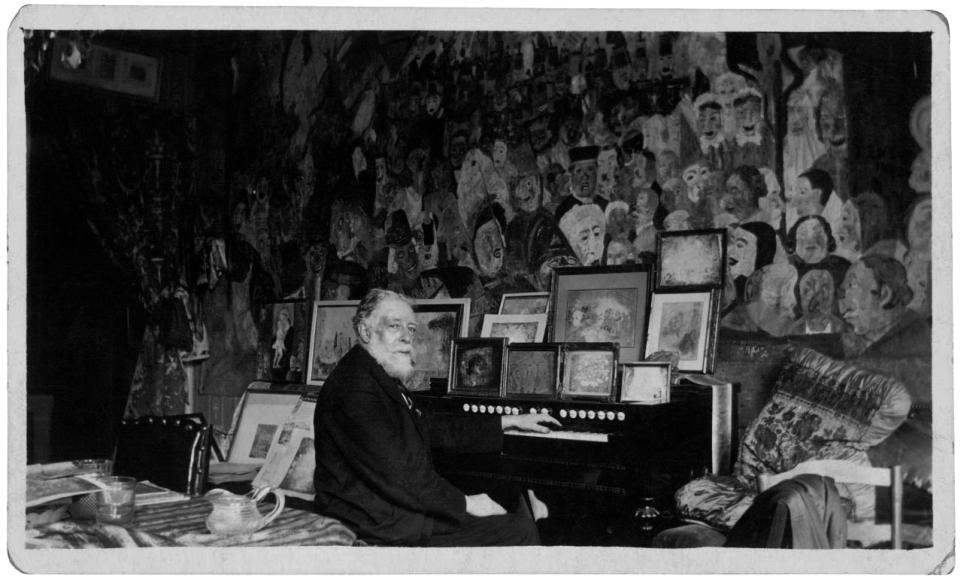
Music on canvas
Even before the idea for La Gamme d'Amour is born, James Ensor paints theatrical scenes that seem to prelude the ballet. The fêtes galantes of French painters Antoine Watteau, Nicolas Lancret or Jean-Baptiste Pater are explicit sources of inspiration. Colourful characters meet in an imaginary place where they imagine themselves pure bon vivants. Ensor's gallant scenes give the impression of being a scene from a stage due to the lack of perspective and horizon. Ballerinas (or The Dance) from 1896 even combines the genre of fêtes galantes with the Pierrot figure and musical instruments. Fanfares and concerts are also increasingly depicted in his work. Music is given a prominent place. And not only on canvas.

Lots of love in La Gamme d’Amour
On his harmonium, Ensor composed a series of musical pieces that he assembled into a six-part ballet in 1911: La Gamme d'Amour. The title is a nod to Watteau's 1717 painting of the same name and means as much as the scale of love or love range. La Gamme d'Amour tells the story of the impossible love between Miamia and Fifrelin and is set during carnival in a shop of masks and puppets. Ensor, who has no musical training, enlists the help of some friends for musical notation. The director of the Ostend Music Conservatory, Aimé Mouqué, puts the main melodies on paper after which the piece is orchestrated by Michel Brusselmans, the brother of the painter Jean Brusselmans.
La Gamme d'Amour consists of six movements: Flirt des marionettes, Lento and Andante from Complainte et Berceuse, Gamme d'Amour, Marche funèbre, Enlacements and Pour une orgue de Barbarie. Don't expect grotesque drama like Wagner's - Ensor was, however, a big fan - but a salon work that avoids all complexity and simply wants to please. Listen to a version for piano solo below.
Ensor conceives his creation as a ballet d’action in which costuming, choreography and facial expressions are equally important. For this Gesamtkunstwerk, Ensor designs the set and costumes on painted textiles. He also wrote the screenplay. The exhibition James Ensor. Maestro exhibits some set sketches, ideas for ballet costumes and self-designed posters. It was not until 1924 that the opera was first performed in its full glory at the Royal Flemish Opera in Antwerp. Two years later, he painted a new work entitled La Gamme d'Amour. An ironic self-reference or the culmination of a lifelong obsession?
